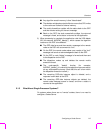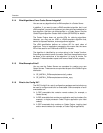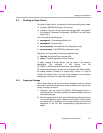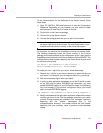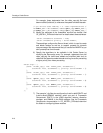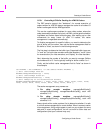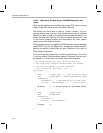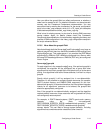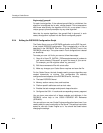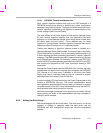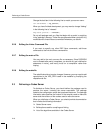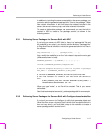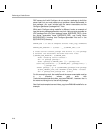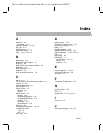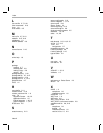
Creating a Codec Server
2-14
Engine.algs[].groupId
For each local algorithm, if the optional groupId field is uninitialized, the
algorithm is configured into its own, unique groupId. This is because we
don't know what priority the algorithm will run at, so we place it into a
unique group to prevent preemption by any other algorithm.
Note that for remote algorithms, the groupId field is ignored. In such
cases, the algorithm is placed into the Server-configured groupId.
2.2.4 Editing the DSP/BIOS Configuration Script
The Codec Server runs as a DSP/BIOS application on the DSP. As such,
it has a static DSP/BIOS configuration. This is created with a .tcf file as
described in the DSP/BIOS Tconf User’s Guide (SPRU007) and in the
DSP/BIOS online help. The syntax used in Tconf configurations is based
on JavaScript.
To create your own .tcf file for your server, follow these steps:
1) Copy all.tcf from CE_INSTALL_DIR/examples/servers/all_codecs to
your server directory. Rename it to match the name of your server.
For example, your file might be called "my_server.tcf".
2) Edit the servername.tcf file with a text editor.
3) Make any changes your Codec Server requires and save the file.
For the Codec Server, the task threads used to process algorithms are
created dynamically at runtime. This configuration file statically
configures several aspects of the DSP/BIOS kernel, including:
❏ The base DSP/BIOS kernel
❏ Memory section names, sizes, and locations
❏ Platform-specific attributes such as clock rates
❏ Enables the task manager and dynamic heap allocation
❏ Configures the C64+ L1 cache and corresponding memory segment
You can learn more about all of these modules and attributes in the
DSP/BIOS online help or the C6000 DSP/BIOS API Reference
(SPRU403).
You can add your own non-Codec Engine configuration items here if you
need to add your own functionality to the Server. The settings have been
tested for use with Codec Engine as is. You should be careful about
changing the settings.



